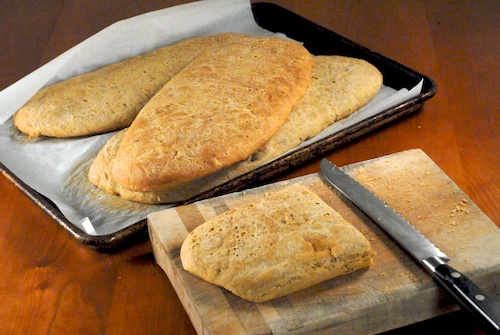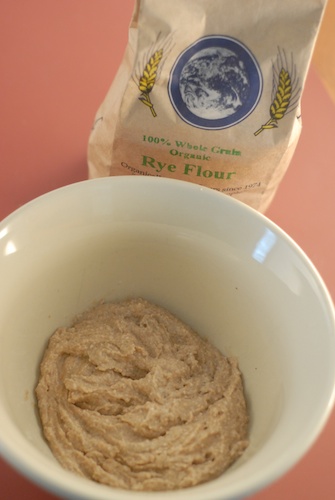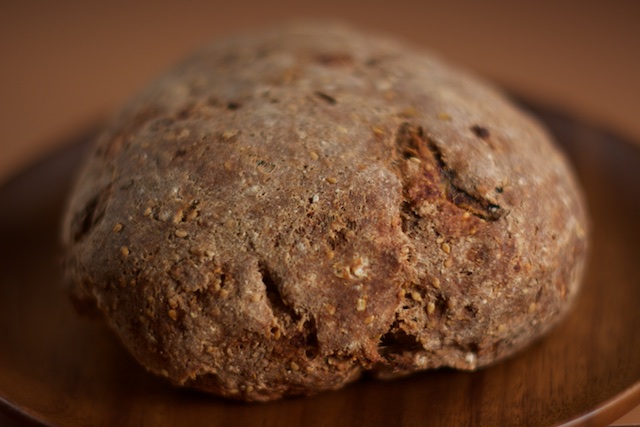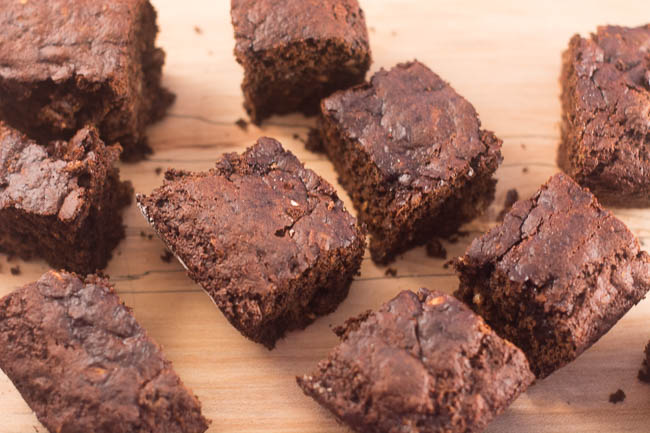
walnut currant bread and butternut squash pear soup
My two teens both want good bread. My son loves ciabatta for Italian-style sandwiches and my exchange son finds even whole wheat American bread to be mushy and bland. I served him an unsliced artisan-style loaf and he found that much more like what he has at home. So I set out to make breads for the teens.
My first try was a partially whole wheat ciabatta, the Ciabatta Integrale from King Arthur Flour Whole Grain Baking. I’d made the recipe before but not for ages. I used to make it with white whole wheat flour, but this time I used whole wheat flour and white flour. The overnight ferment the dough gets at the beginning, plus a long rest in the fridge for another step of the recipe while I was out and about, gave the loaf a nice bit of sourdough tang. In lieu of the dry milk powder the recipe called for I used Naturade Soy-Free Veg vegan protein powder.
I forgot that ciabatta is so wet and sticky that when you proof the loaves you need to grease the saran wrap you use to cover the them. About half the loaf ripped off when I removed the saran wrap, thus, my ciabatta came out rather flat as you can see. I’m going to keep making it, and when I get it fine-tuned I’ll write up the recipe for you. (10/15 update: I made it again, greasing the loaf before putting saran wrap on it. Yet my loaves still turned out just as short. Good-tasting, but impossible to make into a sandwich.11/3 update: see the advice I got about ciabatta from King Arthur Flour in the comments.)

a rather short loaf of ciabatta integrale
Next I tried a Walnut Currant Bread, adapted from another King Arthur Flour Whole Grain Baking recipe to be a regular yeasted loaf instead of sourdough. The result was a soft, sweet, currant-and-walnut-studded loaf that pleased everyone. It reminded my host son of his mom’s Christmas bread. I served it along with my butternut squash pear soup.
Finally, and most ambitiously, I tried making a dark sourdough rye bread with homemade sourdough starter, or levain, from rye flour, once again drawing on King Arthur Flour Whole Grain Baking for its expertise. The levain becomes like a little pet that needs to be fed and watered, once a day at first and then twice a day, and the whole process takes five days. Each time you discard half of the levain, then add four ounces of fresh flour and water.
When I complained to my son and husband about the half a pound of rye flour that the levain needs per day, both of them thought of “Little Shop of Horrors” and warned me that the levain might try to take over the world. I might kill it off before then: now that I’ve made my loaf I have the starter chilling in the refrigerator to slow it down. Short of being a bakery, I can’t see feeding it so much flour to keep it going, especially not rye which costs more than whole wheat. I’m thinking that the KAF recipe is more for a bakery than a household and to keep a sourdough starter, I’d need to figure out how to cut the recipe down.

homemade rye levain (sourdough starter)
I was convinced that the levain wouldn’t work and my loaf of sourdough rye would be a brick. I sweated it out, thinking I should have cheated and added a little baker’s yeast. But, surprise, it actually worked! The loaf rose– after, true, long hours proofing in the oven at 100 degrees. Sweet!

ta-da! dark sourdough rye bread from homemade rye levain
The loaf was crusty outside but soft inside, dense but not too dense with a distinct sourdough tang. I used way more levain than the tablespoon the recipe called for, not wanting to waste the half of the levain that’s discarded twice a day. The levain recipe from the book has about eight ounces of flour in it at any one time, plus water. I used two discarded halves of it.
One thing I might not repeat about the recipe is that it calls for baking the bread on a baking stone. I did so and the crust was really tough on the bottom. The recipe also called for adding a cup of almost-boiling water to a pot in the oven for the first few minutes of cooking to steam the oven, which I did. I’d like to know whether that really makes a difference. I’m sure there will be more baking experiments ahead.







{ 5 comments… read them below or add one }
I can’t decide which looks more enticing in that top photo; the soup or the bread. Both sound so perfect for the fall. Comforting, filling, and perfectly seasonal.
Hannah recently posted..Coming Soon to a Mailbox or Newsstand Near You…
Thanks, Hannah! I’m definitely in fall cooking mode now.
mary recently posted..Tempeh Sloppy Joes
I’m glad you found our cookbook helpful! If you want a little help troubleshooting the ciabatta, feel free to give our experts a ring on our Baking Hotline! We’re here year-round by phone, email, or live online chat. Hope to talk with you soon! http://www.kingarthurflour.com/contact/
Thank you Allison! Good to know about the baking hotline. The substitution I made, vegan protein powder for dry milk powder, may have had something to do with my results. I’d have to try it both ways to be sure, though I don’t have dry milk powder in the cupboard anymore. Maybe your experts could shed some light on it.
mary recently posted..What I Made This Week: Bread Baking with the King Arthur Flour Whole Grain Baking Book
Allison, I took your advice and emailed the customer support about my short ciabatta. I also asked whether ciabatta always has dried milk powder and whether substituting vegan protein powder for dried milk powder would have any effect on the recipe. Here’s part of the helpful reply I got:
Hello Mary,
Thank you for contacting us here at King Arthur Flour. First of all, you are correct and ciabatta does not rise high. It is typically 2″ or less, so your breads sound like they are coming out just fine.
Ciabatta recipes of old did not have any dried or fresh milk, they were more lean. We like the dried milk, as it gives a little extra tenderness to the crumb and helps with browning.
You can leave it in or out, and you can certainly add a tablespoon or two of protein powder to the recipe with no issues. You’ll just have to try a few different versions to see which you like best. Ah, that’s the fun part of baking!
Hope this helps!
mary recently posted..What I Made this Week: Pumpkin Chia Chocolate Chip Cookies